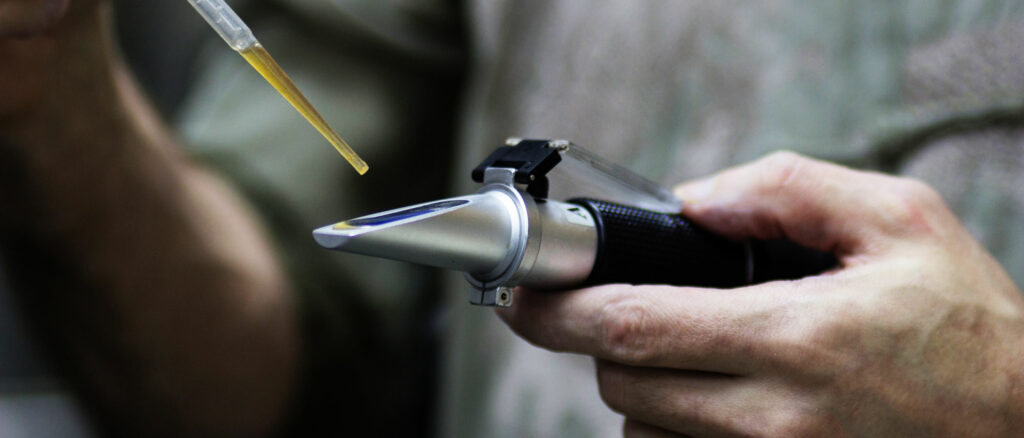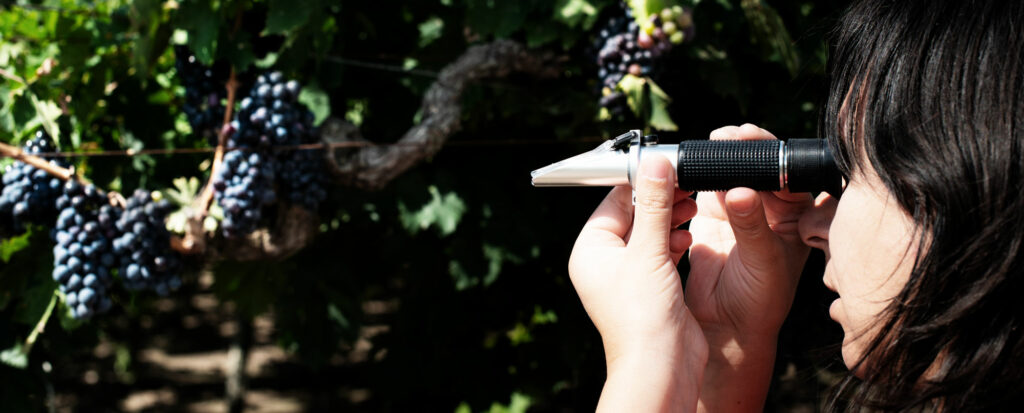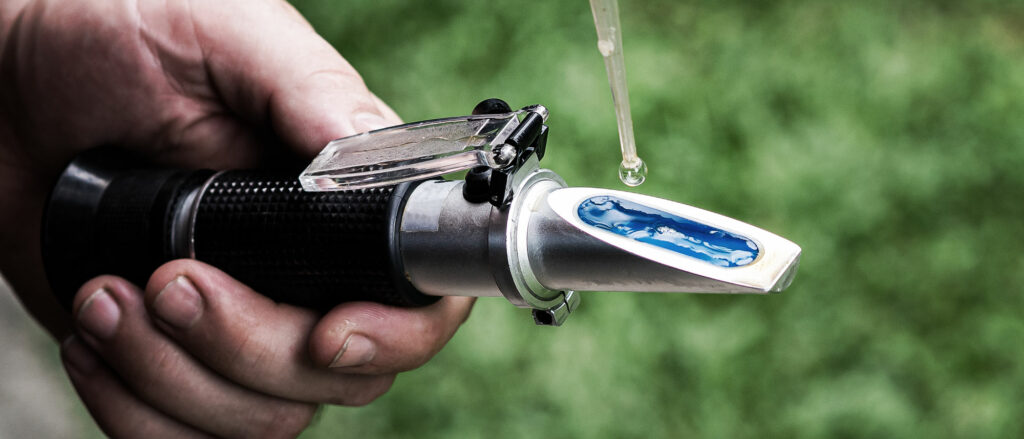
A refractometer is a device that measures concentrations of a particular substance in liquid solutions. It is used throughout the food, beverage, agricultural, chemical, and manufacturing industries. We will be concentrating on Refractometers for brewing specifically.
There are many different Refractometers that each read different things, such as sugar content in liquid, milk purity and even engine oil quality. The refractometers commonly found in the beer brewing industry are used to measure sugar or alcohol. The great thing about Refractometers, it only needs a few tiny drops of liquid to get an accurate reading. This means less waste and clean-up.
Another bonus with some Refractometers is you don’t need your liquid to be at a certain temperature to get a reading. If the Refractometers have ATC (automatic temperature compensation), There is no need for temperature correction. Saving you some time on your brew day.
How Refractometers Work
Light passing through a liquid bends (refracts) the light. It’s like when you put a pencil in a glass of water, and it looks like it has been bent. This is due to refraction.
Refractometers use refraction to determine their results. For instance, to read the sugar (Brix) amount in a liquid, place a few drops onto the Refractometer’s prism. Light will pass through the liquid, depending on how much sugar there is. The light will refract or change direction differently. The more sugar, the more refraction. This is known as the angle of refraction. This light is passed through the prism to be read on a scale or a refraction index (nD). These values have been pre-determined, and you will be able to see the outcome. How you see them will depend on the type of Refractometer you have.
Types of Refractometers
As mentioned, hundreds of Refractometers do different readings, but they can be split up into two groups. Optical or Digital.
- Optical Refractometers use a viewing lens (like a camera or binoculars) for you to see the results. These are the most common type. They are usually low-tech, and all you need is a light source. This means no batteries are needed, and fewer things can go wrong.
- Digital Refractometers use the same technology as the Optical type, but the result is shown on a digital screen instead of a view lens. This takes any guesswork out of any reading.

What GEB stock.
We have a few Refractometers in stock for you to get accurate readings of your brew.
Beer Refractometer – Brix
This Refractometer will read Brix and Specific Gravity of your brew. Brix (Bx) is the concentration of sucrose in a liquid. This can be used for sugar-related liquids like fruit juice, soft drinks, wine and cider. There is also a Refractometer with LED. This uses a LED on the Refractometer and is perfect for low light or indoor areas.
Beer Refractometer – Plato
Plato (P) is very similar to Brix, with a slight difference in the calibration. Essentially, they are the same (based on the mass fraction of sucrose); they differ in their weight percentage to specific gravity in the fifth and sixth decimal places. This scale is commonly used in Europe.
Alcohol Refractometer
This Refractometer will measure the amount of alcohol in a liquid. This is great for distillers and liqueur makers.
Honey Refractometer – Brix / Baumé / Water
This one is for high-sugar liquids such as honey, jelly, jam and syrup to help monitor and control sugar concentrations. It will read Brix, Baumé and Water amounts. Baumé (Be) is a scale for the density of liquids. This is an excellent tool for mead-making.
Wine Refractometer – Oechsle / Alcohol
This refractometer is a special model for winemakers and measures Oechsle and alcohol. Oechsle scale measures the density of grape must, which indicates grape ripeness and sugar content used in winemaking.
Digital Refractometer – Brix
This will give you a digital readout of Brix. It still needs a light source but is much easier to use as it gives the reading on a digital screen.

Why not just use a hydrometer?
Hydrometers are great. They are low-cost, low tech and low maintenance. But it can sometimes be hard to get an accurate reading with the tube bobbing around in your brew and determining the correct reading level. There is some wastage due to the amount of liquid you need to get a reading. Also, the time it takes to get your hot wort to cool down to get a reading. You don’t need to worry about these factors with a Refractometer.
Refractometer Care.
Not much maintenance is needed for a Refractometer, but it will need calibration from time to time. Calibration is quickly done using the calibration screw on the Refractometer and distilled water or a calibration solution.
It is also essential to keep it clean. Wipe and clean the prism with a soft cloth. This ensures you won’t get “contaminated” readings.
Check out our YouTube Video: